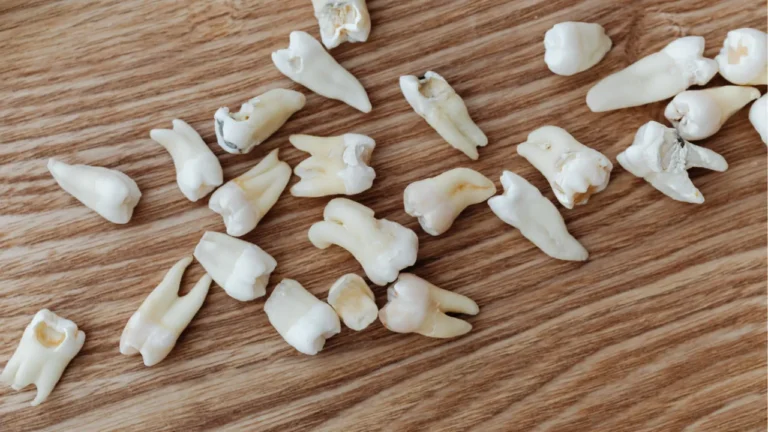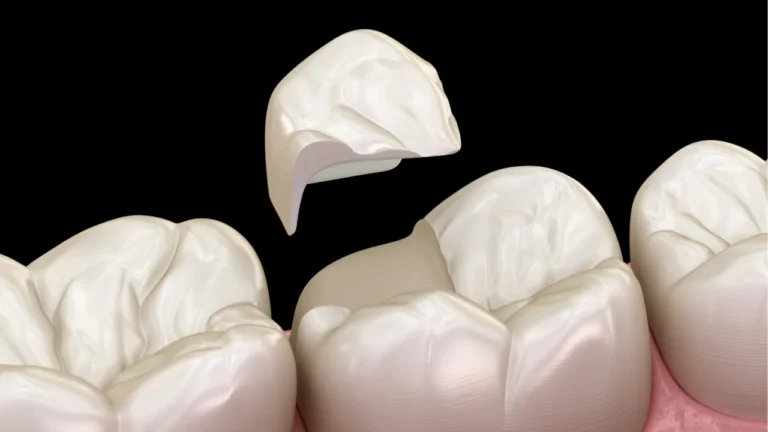Dental crowns are a versatile solution for restoring the health, function, and aesthetics of damaged or weakened teeth.
But if you’re considering multiple crowns, you might wonder: Is there a limit to how many dental crowns you can have?
Let’s explore the factors that determine the number of crowns one can get and guidelines for achieving a natural-looking smile.
Quick Summary
- No strict limit on the number of crowns, but aesthetics and function must be considered.
- Front teeth: Usually no more than 8 crowns to keep a natural look.
- Back teeth: Up to 4 crowns, designed for strength and chewing pressure.
- Factors affecting crown numbers: tooth size, dental health, location, and extent of damage.
- Multiple crowns may be needed for tooth decay, dental implants, or restoring several damaged/missing teeth.
What are Dental Crowns?
A dental crown is a tooth-shaped cap that restores a decayed, broken, weak or worn-down tooth.
Dentists also use crowns to cover dental implants and root canal-treated teeth.
They can be made from different materials such as ceramic, porcelain-fused-to-metal, and gold alloy, depending on the patient’s needs and preferences.
Dental crowns work by protecting the tooth from further damage, strengthening it, and improving its function and aesthetics.
How Many Dental Crowns Can You Have?
The number of dental crowns one can have depends on several factors, including:
- The extent of the dental problem: If you have multiple teeth that are damaged or missing, you may need more dental crowns to restore your oral health.
- The size of the tooth: Smaller teeth may require a different approach than larger teeth when it comes to dental crowns.
- The patient’s overall dental health: If you have good oral hygiene and healthy teeth and gums, you may be a good candidate for multiple dental crowns.
- The location of the tooth: Teeth located in the front of the mouth may require a different approach than back teeth.
While there is no set maximum number of dental crowns one can have, dental professionals generally recommend the following:
- For front teeth: Generally, no more than eight dental crowns should be placed on the front teeth to avoid an unnatural look.
- For back teeth: Depending on the size of the teeth and the patient’s needs, up to four dental crowns can be placed on back teeth.
Guidelines for Placing Dental Crowns
While there is no strict limit on the number of crowns one can have, dental professionals generally recommend:
- Front Teeth: No more than eight dental crowns should be placed on the front teeth (upper or lower jaw) to avoid an unnatural appearance. This guideline helps ensure that the smile retains its natural look and symmetry.
- Back Teeth: Depending on the size and structure of the back teeth, up to four dental crowns can be placed. These crowns should prioritize strength and durability due to the pressure from chewing.
Situations Where Multiple Dental Crowns May Be Necessary
There are various scenarios where multiple dental crowns might be recommended, such as:
- Multiple Missing Teeth: Crowns can be placed on dental implants to replace several missing teeth.
- Extensive Tooth Decay or Damage: If several teeth are severely decayed or damaged, crowns may be used to restore them.
- Restoration After Dental Implants: If you have multiple dental implants, crowns can be placed on them to restore their function and aesthetics.
Take away
Dental crowns can be an effective restoration option for patients with damaged or missing teeth.
The number of dental crowns one can have depends on several factors, including the extent of the dental problem, the size and location of the tooth, and the patient’s overall dental health.







